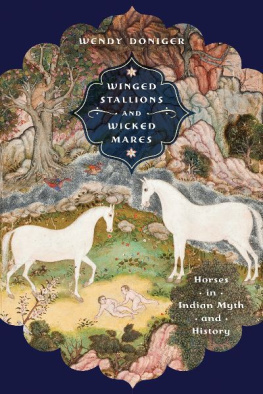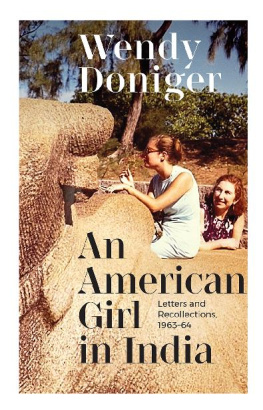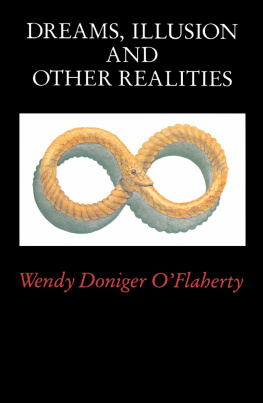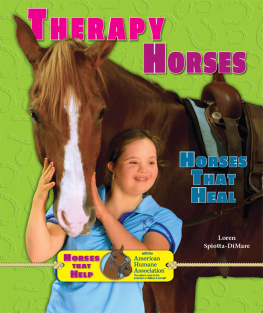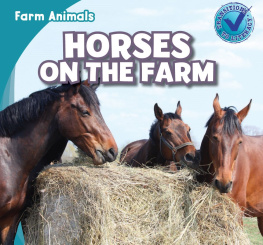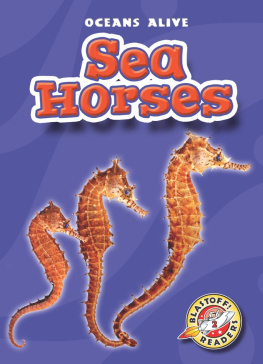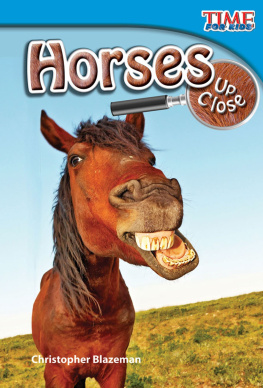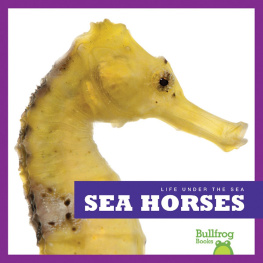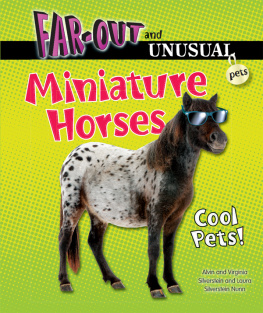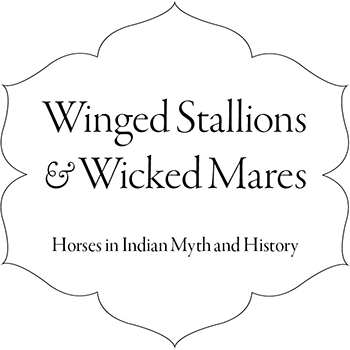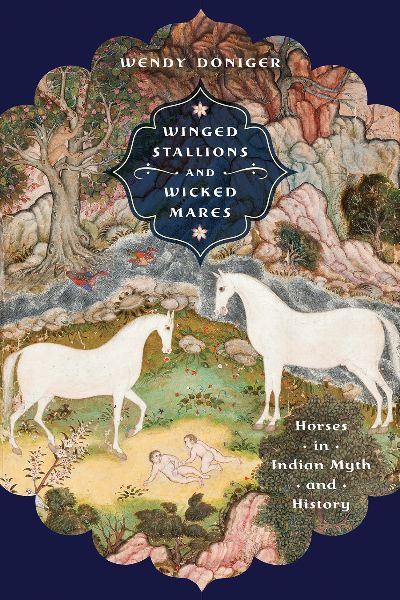
Winged Stallions & Wicked Mares
Richard Lectures for 1997
Wendy Doniger
Illustrations curated by ANNA LISE SEASTRAND
University of Virginia Press | Charlottesville and London
Publication of this book was assisted by a grant from the Page-Barbour and Richard Lecture Fund
University of Virginia Press
2021 by Wendy Doniger
All rights reserved
First published 2021
Library of Congress Cataloging-in-Publication Data
Names: Doniger, Wendy, author. | Seastrand, Anna Lise, other.
Title: Winged stallions and wicked mares : horses in Indian myth and history / Wendy Doniger ; illustrations curated by Anna Lise Seastrand.
Description: Charlottesville : University of Virginia Press, 2021. | Series: Richard lectures | Includes bibliographical references and index.
Identifiers: LCCN 2020037878 (print) | LCCN 2020037879 (ebook) | ISBN 9780813945750 (hardcover) | ISBN 9780813945767 (ebook)
Subjects: LCSH : Winged horses. | HorsesMythology. | Hindu mythology. | MaresMythology.
Classification: LCC GR 830. W 57 D 55 2021 (print) | LCC GR 830. W 57 (ebook) | DDC 398.24/5296655dc23
LC record available at https://lccn.loc.gov/2020037878
LC ebook record available at https://lccn.loc.gov/2020037879
Cover art: The birth of the Ashvins. Folio from a Harivamsha, Lahore, Pakistan, Mughal empire, c. 158590. (Los Angeles County Museum of Art, from the Nasli and Alice Heeramaneck Collection, Museum Associates Purchase [M.83.1.7]; digital image Museum Associates / LACMA, Licensed by Art Resource, NY)
For Penelope Chetwode Betjeman (February 14, 1910April 11, 1986)
and also for Sidi, Nandi, Rebel, Damien, Smif, and Babur
Contents

MAP OF INDIA
IN MEMORY OF PENELOPE CHETWODE BETJEMAN
I discovered India and horses at the same time. I was twenty-two, in 1963, and it was my first visit to India. Flying from Calcutta to Kathmandu, I happened to be seated next to a woman who turned out to be Penelope Betjeman, ne Penelope Valentine Hester Chetwode. She was the daughter of Field Marshal Sir Philip Walhouse Chetwode, 1st Baron Chetwode, who had been commander of the British Forces in India from 1928 to 1935. Penelope told me that, though she had lived in Delhi from her eighteenth to her twenty-fifth birthday, she was only now trying to learn Hindi, because, back in the day, we only learned the imperatives of all the verbs. (She said this deadpan; she never joked.) In 1938, in England, Penelope had been photographed with her white Arab gelding Moti in the drawing room of Lord Berners (Gerald Hugh Tyrwhitt-Wilson, 14th Baron Berners, 18831950), while he painted a portrait of the two of them.
Now, in Kathmandu, in 1963, Penelope (who was staying with the Maharaja in his palace) rode in a small race on the miniscule track on the palace grounds; disdaining to use the whip as the other jockeys did, she allowed them all to lap her twice, on two full circuits, and as she finally came into the home stretch she patted her ponys neck, to demonstrate kindness to animals, she later explained to me.
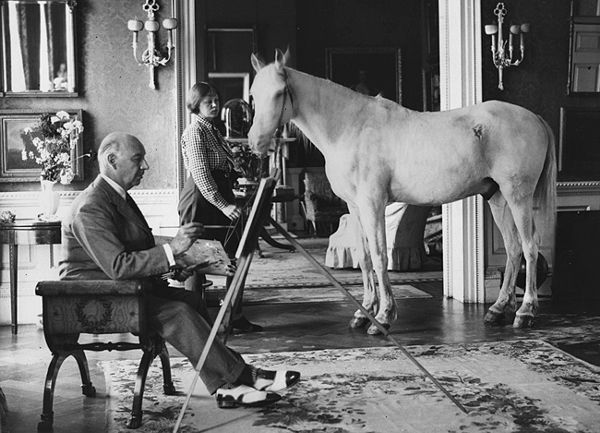
Figure 1. Penelope Chetwode Betjeman and her Arabian horse Moti having their portrait painted by Lord Berners in the drawing room of his Berkshire home, July 4, 1938. (Photo by Fox Photos/Hulton Archive via Getty Images)
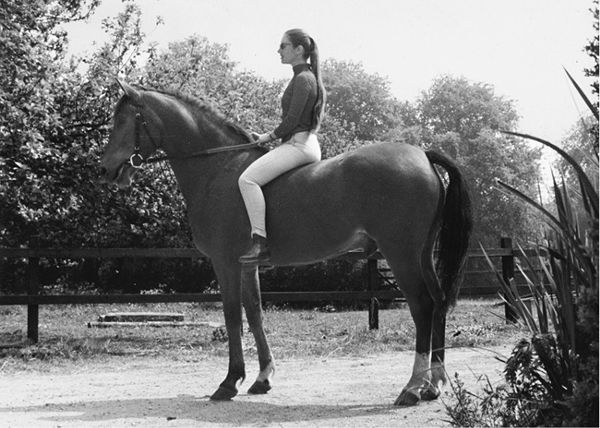
Figure 2. Wendy Doniger on her Anglo-Arabian horse Damien, at the Mead, Wantage, Berkshire, 1968. (Photo taken by Penelope Betjeman)
When I moved to Oxford in 1965, Penelope taught me to ride, on her own Arab gelding Sidi, and then kept my horses in her stable at the Mead, in Wantage, Berks.: first the cob Nandi, who taught me how not to fall off; then the Connemara pony Rebel, who taught me how to jump fences; and finally the Anglo-Arab Damien, whom I bought from Penelopes friend Myles Dillon in Ireland, Dillon whose works on the shared literature of ancient Ireland and India I had read for years. And so India came into my horse world again. Penelope and I rode Sidi and Damien up on the Berkshire Downs, and rode them to hounds with the Old Berks, and jogged and ambled them home on a loose rein in the long English evenings, their hooves echoing through the narrow, silent streets of the sleepy villages as we talked about India.
Back in the United States, I stayed closely in touch with Penelope by mail as I rode my Arab Smif (named after my sons imaginary friend) up in the Berkeley Hills from 197578, and finally my wonderful Arab Babur (named after the great equestrian emperor of India), who came to me as an unbitted three-year-old in 1980 and died out at grass at the age of thirty-two.
Penelope returned often to India, usually taking groups trekking on horseback up into the Kulu hills, where she visited the wooden temples that she had written about for years. On April 11, 1986, riding at the head of a group in those hills, she halted her horse and dismounted properly, then continued to slip to the ground, dead. On that spot there is a plaque with an inscription that ends, She died in these hills she had loved so long.
Now, more than three decades later, I have written this book, in grateful memory of Penelope and our horses.
I began writing this book for the Radhakrishnan Lectures at All Souls College, Oxford University, in May of Trinity Term, 1986. (Romila Thapar was there, and Richard Gombrich, Bimal Matilal, and Andrew Sherratt, and I benefited greatly from their feedback.) Penelope Betjeman was to be there too, but she died just weeks before my lectures began. I lost heart in the book then, and dropped the reins until January 1996, when I visited several North Indian studs to find out more about breeding horses in India; the breeders were most generous with their time, and I learned much that was of great interest to me. I am particularly grateful to Mrs. Naju Bhabha for giving me introductions to some of the best studs in India. I am also deeply indebted, for their wisdom and hospitality, to Dr. Handa, of the Poonawalla Stud, Sholapur Road, in Pune; Mr. Chenoy, of Venkateshbagh, Ghorpuri, Pune; Dr. Faroukh Wadia and Statira Wadia, of the Wadi Stud, Pune; Mr. Martin Mahendra, of Broad Acres; and the Kunigal Stud near Bangalore.
In February 1997, I developed the Radhakrishnan Lectures into the Richard Lectures at the University of Virginia. But then I put the book out to pasture again until 2017, when Eric Arthur Brandt, editor in chief of the University of Virginia Press, persuaded me to resurrect the Richard Lectures and magically translated my antediluvian computer files into Word files that enabled me to pick up the conversation almost in midsentence. I am deeply indebted to him for putting the book back into harness, as well as for standing by the book through the whole course, bringing it home on a tight rein. And I must also thank the University of Virginia for inviting me to give the generously endowed Richard Lectures in the first place.
Next page
